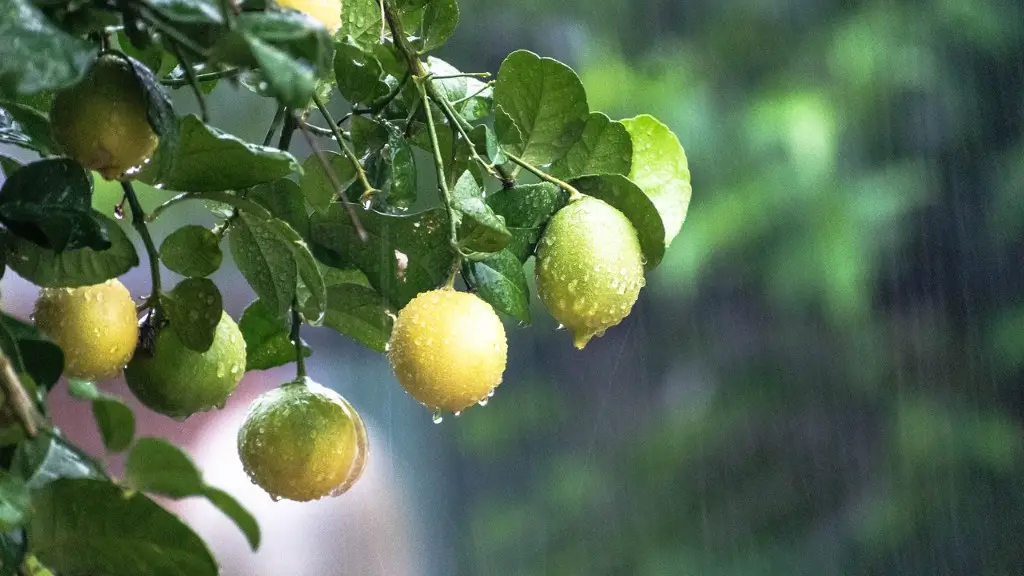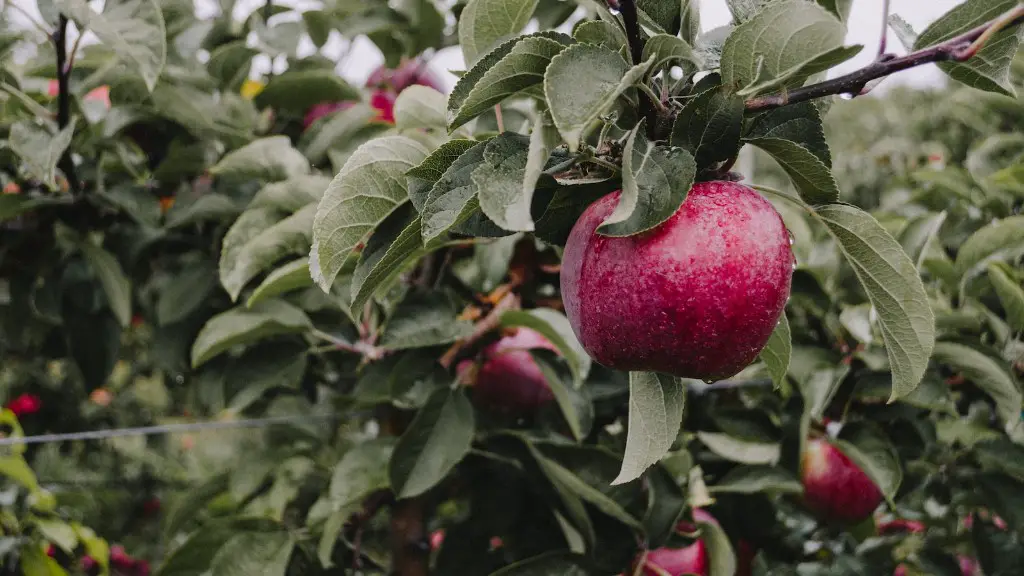Growing lemons is a rewarding and exciting endeavor. Citrus trees such as lemons are winter hardy in USDA zones 9-11 and can produce juicy, tart fruit for many years. To ensure that your lemon tree will indeed produce fruit, there are several steps to follow.
First, the tree must receive adequate sunlight. The more sun a lemon tree receives, the more productive it will be. The tree should be positioned in full sun for up to 12 hours a day. If the sun is not available for that long, a tree can still produce fruit, but not as much as desired.
Second, lemons need ample water. Watering should happen twice per week, or more, during periods of extreme heat or drought. Once the fruit has started to ripen, cut back on watering since excessive amounts could cause the fruit to split.
Third, fertilization is key. Fertilizing starts as soon as a tree has gone through its first winter and is important in boosting lemon production. Opt for a citrus fertilizer with nitrogen, phosphorous, and potassium in equal portions.
Fourth, pruning helps to generate a better harvest. Pruning should occur annually and involves removing diseased branches, limbs that rub against each other, and any sprouts that are growing near the bottom of the trunk. Trimming off old leaves and dead branches will help prevent the spread of disease and improve air circulation.
Finally, pests are something to watch out for. Citrus trees are susceptible to a variety of insect pests as well as some diseases. Pest control measures should be taken to ensure your lemon tree’s health and productivity.
Preparing Soil for Citrus Trees
Before planting the lemon tree, soil preparation is essential. It’s recommended to mix the soil with soil additives like compost, manure, and phosphorous. The soil should be well-drained and of a neutral pH. It’s important to test the soil first to determine what needs to be added and how much.
In order to provide adequate nutrition to the tree, it’s also important to mix in calcium, potassium, and magnesium. To decrease the chances of disease, soil fertility should also be provided by adding sulfur or gypsum to the soil.
The size of the planting hole should be three times the root ball size. To obtain the desired drainage and nutrient content, it’s important to mix the soil removed from the hole with the soil and soil additives for a nourishing mix.
Providing a good foundation for the tree’s roots can go a long way in making sure your lemon tree will be as productive as possible. Allowing a root system to spread out more can be beneficial as well.
Placing mulch, such as straw, around the tree during the growing season can also help in conserving moisture, controlling weeds, and preventing soil erosion.
Watering Citrus Trees
Watering citrus trees is an important element in ensuring a healthy and successful harvest. Depending on the current weather conditions and how long the tree has been planted, additional watering may be needed for young saplings. New trees require up to three-quarters of an inch of water a week.
Once the tree is established, watering should be adjusted to the weather and soil conditions, reducing the amount of water given during periods of heavy rain and increasing it during dry periods. A good measure of soil moisture can be done by sticking your finger in the soil and feeling around.
It’s important to avoid waterlogging, since too much water can cause root rot and could potentially kill a tree, especially during long periods of wet weather. To help with water retention, plants can be mulched with organic compost or materials like bark or wood chips to help reduce evaporation.
When it comes to watering, make sure it is done slowly and thoroughly. Citrus trees prefer deep watering rather than shallow, frequent ones. Citrus trees should be watered initially in the morning, but in hot climates afternoon irrigation can help prevent stress that may cause fruit drop.
Citrus trees should be checked periodically for signs of water stress, which can be identified by looking for yellow foliage, leaf drop, and slow growth. If any of these signs are present, it might be time to increase irrigation.
Transplanting Citrus Trees
Transplanting a lemon tree involves some preparation and planning beforehand. The best time of year to transplant a lemon tree is during the spring or fall. Choose a location that has full sun and well-draining soil.
Before transplanting, it’s important to dig a hole that is twice as wide and twice as deep as the root ball of the tree. If the soil is poor, it’s recommended to mix compost or other soil amendments into the soil removed from the hole. Before placing the root ball in the hole, gently remove any excess soil or roots.
Once the tree is placed in the hole, use the soil mixture to fill the gaps around the root ball. Make sure to pack the soil down as you go to ensure that there are no air pockets. The tree should then be watered thoroughly, making sure to saturate the root ball.
Once the tree is planted, it’s important to use organic materials such as mulch or straw to help the tree retain water and to prevent weeds from growing near the base. Make sure that the material is not placed too close to the trunk of the tree.
Transplanting a lemon tree can be a tedious process, but if done correctly and given the proper care, it can lead to many years of fruitful harvests.
Fertilizing Citrus Trees
A lemon tree needs regular fertilizing in order to produce healthy and abundant fruit. Citrus trees should be fertilized with a balanced fertilizer that provides equal portions of nitrogen, phosphorous, and potassium. Look for fertilizers specifically designed for citrus trees to optimize nutrition.
When choosing a fertilizer, keep in mind the age of the tree. For younger trees, a balanced fertilizer should be used, while for more mature trees, a fertilizer should be used that is higher in nitrogen and potassium. Fertilizers need to be applied twice a year, in early spring and late fall.
It’s also important to monitor the soil’s pH level. If the pH level is too low, the tree will not be able to absorb all of the nutrients that it requires. Applying lime to the soil can be helpful when it comes to adjusting the pH levels.
Fertilizing citrus trees is a process that requires some patience and the adherence to a rigorous regimen. The rewards of your effort will be worth it, however, as you will be able to harvest healthy, flavorful lemons to enjoy.
Harvesting Citrus Trees
When it comes to harvesting lemons, timing is essential. The best time to harvest fruit is when it is still firm and has not yet started to turn yellow. The skin should also be glossy since dull skin can indicate that the fruit is overly ripe.
It’s best to check the fruit regularly since one lemon can go from ripe to overripe in a matter of days. To harvest the fruit, gently twist and pull the stem to remove it from the tree. Make sure to avoid bruising the fruit as much as possible, as this can cause it to spoil faster.
When harvesting, it’s also important to discard any damaged fruit as soon as possible in order to prevent the spread of disease. After harvesting, it’s best to store the lemons somewhere cool and dry, away from direct sunlight.
It’s worth noting that lemons and other citrus fruits will not ripen any further once they are picked, so harvesting them at the peak of ripeness is essential in order to get the most out of your lemon tree’s bounty.




